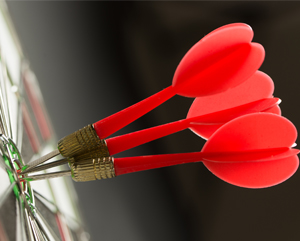Why is brand diagnosis important?
Collectively, the UK’s leading 75 brands are now worth £282.9bn, (Kantar Sept 2022) and up to 90% of a brand’s total market value is based on intangible assets, such as brand recognition (Source: Ocean Tomo, 2020). So, it’s no wonder that as marketers we’re always banging the drum for the importance of building a strong brand. Some go even further and argue that the brand is a company’s most important asset and as such, at least half of the marketing budget should be allocated to brand-building efforts.
Yet, we know from experience that brand does not always receive the attention and investment it deserves. In the current economic climate, there’s huge pressure to focus on tactical marketing activity that directly deliver sales, with a lack of understanding that brand activity plays a key part in driving revenue, leaving it vulnerable to becoming outdated, irrelevant to customers and declining in equity.
So, with business plans for 2024 in full swing, we’ll explore why taking the time to analyse and evaluate your brand should form the basis of any marketing plan.
Seven benefits of carrying out a brand diagnosis
Spending time diagnosing your brand can deliver many benefits for businesses. Implementing processes to continuously monitor the brand’s performance should be key elements of any marketing plan. In today’s highly competitive market, if executed well, allowing customers to help to guide brand strategy can help with:
- Positioning: Where a brand wants to be versus where it actually is/ Key insights can help refine your marketing strategy; adjusting it to shift positioning or expand on an existing position. This competitive intelligence is crucial for market share expansion and profitability enhancement.
- Strengths and weaknesses: Identifying and evaluating strengths and weaknesses helps craft unique market positions and uncover market opportunities. And by examining competitors and market dynamics, an ongoing brand analysis ensures a sustained market advantage.
- Innovation: Knowing how your brand is perceived, rather than how individuals within the business perceive it, allows you to reveal untapped market opportunities, enhancing your brands competitiveness and potentially increasing market share.
- Perception: Understanding customer feedback, and their needs and preferences, ensures that you can continue to stay ahead of the competition. A brand with high salience will attract and retain customers for as long as it keeps evolving and adapting to its dynamic environment.
- Loyalty: By listening to your customers and understanding why they’re loyal to your brand, you can do more activity to build advocacy and create a stronger brand affinity, adapting as your customers wants and needs change.
- Strategy: Measuring brand is notoriously difficult to do, yet vital if we are to ensure it gets the right amount of investment. Brand diagnosis insight allows you to set more measurable, and objectives, aligned with the overall business strategy.
- Investment: Decide on the right level of marketing investment to deliver on your strategic objectives; driving awareness to gain new customers versus building loyalty with existing customers.
A brand diagnosis should start with a brand awareness survey
Successful brands tend to carry out a brand diagnostic every 12 to 18 months, meaning that they can keep up to date with changing consumer attitudes and adapt their positioning to ensure they remain relevant to their target market. This can be broken down into three key phases:
- Internal review – an in-depth study of all your individual brand components and how they work together to create your brand identity, what people’s perception of your brand are and also looking at what you can do to certain elements to refine and evolve them. An internal brand awareness survey ensures you gather as many different perspectives as possible.
- External review – aimed at consumers, this survey should cover similar topics to the internal review, to give you clear comparison points. Any differences between the two will highlight the areas of your brand that may need some attention.
- Competitor review – the final step is to assess how your brand stacks up against your Who else is targeting your customers? What are they saying? And how are they saying it? Don’t just look at your immediate competitors, it’s also worth looking at stretch competitors – those who operate in the same marketplace, who you aspire to, and have a more established and polished brand.
Marketing planning
Once you have the findings from the brand diagnosis, you can start your marketing planning. Using the qualitative data, combined with other internal metrics, work out the four or five key stages in your buyer’s journey and create a bespoke funnel for your target market. From here you can work out your segmentation, targeting and positioning, then define your objectives and tactics.
The market landscape continually shifts. So, if you want your brand to be agile and remain front of mind, it’s crucial to have a good understanding of your brands performance. Carrying out a brand diagnosis is what will ensure that your annual marketing plan and any associated campaign planning is built on solid foundations for success.
As a marketing agency in Leeds, with over 30 years’ experience, we’ve helped many clients strengthen or evolve their existing brands to meet the ever-changing needs of consumers. If you’d like to find out more, get in touch today.




